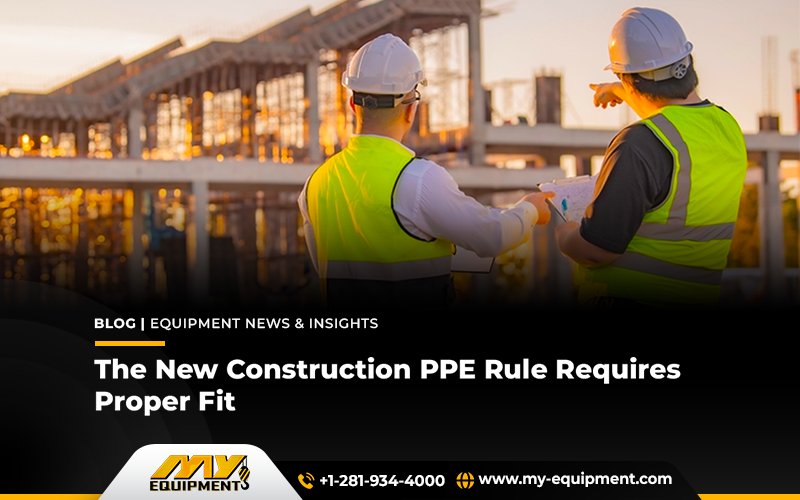Almost half of the construction site accidents happen due to ignorance of wearing Personal Protective Equipment (PPE). The Occupational Safety and Health Association (OSHA) forces construction companies to strictly implement the practice of wearing PPEs even while standing at the construction site or around heavy equipment.
In a latest news update, OSHA has revised the PPE rule on January 13, 2025. According to this, the proper fit of the PPE is a must as a misfit safety equipment is as useless as it could be.
For this purpose, construction companies must act proactively while providing PPEs to their employees according to their body size.
What is the new PPE rule released by OSHA?
“PPE must fit properly to the worker”
Based on this tagline, the new rule is released by OSHA which will be acted on from now on even for the operators of trackhoe for sale. All employers must follow the new rule to avoid any legal penalties by OSHA.
Assistant Secretary for Occupational Safety and Health Doug Parker underlined the significance of this rule in resolving problems that many employees encounter.
The rule is subject to be implemented by every employer especially women working on the construction sites. These women are forced to wear loose-fitted PPEs as customized clothes are not readily available.
The Importance of a Good Fit
For both functionality and safety, PPE must fit properly. Equipment that does not fit properly can cause discomfort, decreased productivity, and even more risks on the job site.
For example, an inadequately sized safety harness may not be able to keep a worker safe in the event of a fall, and excessively large gloves may impair dexterity and raise the possibility of mishaps.
In addition to putting individual safety first, this rule fosters diversity by attending to the concerns of women and workers of all sizes who are sometimes overlooked in the existing PPE market.
Diverse Responses from the Sector
Construction contractors and industry associations have responded to the new norm in a variety of ways.
Although many people agree with the rule’s purpose, there are still issues with its application and clarity.
Partial approval has been given by the American Road and Transportation Builders Association (ARTBA), which supports the rule’s objective but objects to the absence of precise guidelines for identifying a “proper fit.”
Concerns that the regulation as written gives OSHA inspectors excessive authority and leaves contractors unsure about compliance were previously raised by ARTBA’s involvement in the Construction Industry Safety Coalition.
Concerns regarding ambiguity were also expressed by the Associated General Contractors of America, who are currently examining the final rule to completely comprehend its ramifications.
What Companies Need to Do to Follow the Rules
Employers must carefully review their PPE inventory and determine the needs of their employees in order to comply with OSHA’s new guidelines.
According to ARTBA, businesses should make sure that their personal protective equipment (PPE) fits employees properly and doesn’t pose any new hazards.
When choosing PPE, OSHA advises concentrating on important factors such as worker comfort, functionality, and performance.
Employers must strive to remove safety risks while offering protective gear that is customized to meet the needs of each individual employee.
How the Regulation Will Be Implemented
OSHA intends to apply this regulation to the construction industry in the same manner that it does to the general and maritime sectors.
Using an emphasis on preventing hazards without posing new risks, inspectors will assess whether companies have taken reasonable measures to supply PPE that fits adequately.
Implications for the Construction Sector
For worker safety in construction, this rule is a major advancement.
In addition to enhancing protection, OSHA is creating a more secure and welcoming workplace by tackling long-standing issues with poorly fitting personal protective equipment.
The basic objective is still to guarantee that every worker gets the protection they require to carry out their jobs in a safe and efficient manner, even as industry associations continue to negotiate the rule’s criteria.
In order to comply with this important legislation, employers should take prompt action to assess existing PPE procedures, speak with workers about their needs, and purchase appropriately fitting equipment.


 1400 Broadfield Blvd, Houston, TX 77084,
USA.
1400 Broadfield Blvd, Houston, TX 77084,
USA.